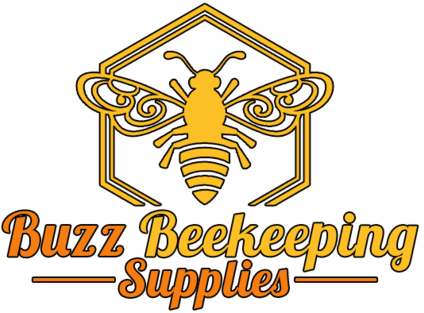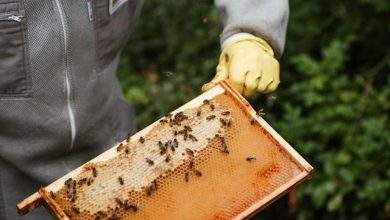Beekeeping Supplies Virginia
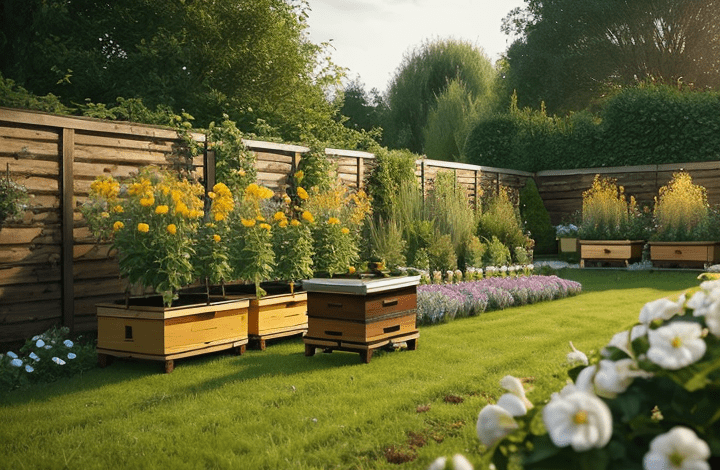
Beekeeping has a rich history in Virginia, dating back to colonial times when European settlers first introduced honey bees to the continent. Today, beekeeping remains a vital practice in Virginia, with thousands of beekeepers tending to hives across the state. The importance of beekeeping for the environment cannot be overstated, as bees play a crucial role in pollinating crops and sustaining natural ecosystems.
Selecting the right equipment is essential, as Virginia experiences hot summers and cold winters that can impact beehive management.
No matter where you are looking for beekeeping supplies in Virginia, we’ve got you covered.
Beekeeping in Virginia
Beekeeping is an integral part of agriculture in Virginia, a state known for its vast agricultural landscapes. In fact, Virginia ranks 37th in the United States in honey production, with about 266,000 pounds.
Essential Equipment for Beekeepers in Virginia
Embarking on a beekeeping journey requires a deep understanding of the essential bee supplies necessary for successful hive management. Key beekeeping equipment ensures the comfort, productivity, and well-being of honeybees, ultimately contributing to a thriving beekeeping operation in Virginia.
Beehive Components:
- Hive Boxes: At the core of any beehive, hive boxes serve as the homes for honeybees and their honeycombs. Langstroth hive boxes are commonly used due to their ability to facilitate easy inspection and manipulation of frames. These boxes come in various sizes to accommodate different stages of bee colony growth, making them crucial for maintaining a well-organized and productive hive.
- Frames: Suspended within hive boxes, frames provide structural support for honeycombs while serving as a foundation for brood rearing and honey storage. Wooden frames with a plastic foundation are preferred by beekeepers in Virginia due to their balance between strength and ease of use. Properly assembled frames play a vital role in the bees’ ability to construct a well-organized colony and also contribute to effective beekeeping management.
- Bottom Boards: Acting as the base of the beehive, bottom boards are essential for hive stability and ventilation. They provide an entrance for the honeybees, enabling them to come and go freely while defending their colony against intruders. In Virginia’s varying climate, it is crucial to select bottom boards that can withstand temperature fluctuations and provide adequate ventilation for the hive. Proper ventilation prevents moisture buildup, ensuring the health and productivity of the bees year-round.
- Inner Covers and Outer Covers: Completing the structural integrity of the hive, inner covers and outer covers provide insulation and protection to the honeybees. Inner covers offer an extra layer of insulation, while outer covers safeguard the hive from harsh weather conditions. These covers contribute significantly to the overall survival of the hive and help maintain a stable environment for the honeybees, especially in Virginia’s challenging weather conditions.
By understanding and investing in essential beekeeping supplies, beekeepers can create a conducive environment for honeybees and establish a successful beekeeping operation.
Protective Clothing:
Beekeeping is an exciting and rewarding hobby, but it’s important to have the right protective clothing to ensure your safety and the well-being of your honey bee colonies.
Bee Suit: Protection Against Bee Stings – One of the most crucial pieces of protective clothing for beekeepers is a bee suit. There are two main types of bee suits to consider: canvas beekeeping suits and ventilated bee suits. Canvas suits offer excellent durability and sting resistance, providing maximum coverage against bee stings. On the other hand, ventilated bee suits are designed with breathable mesh fabric, allowing beekeepers to work comfortably in hot weather conditions while still providing protection from bee stings.
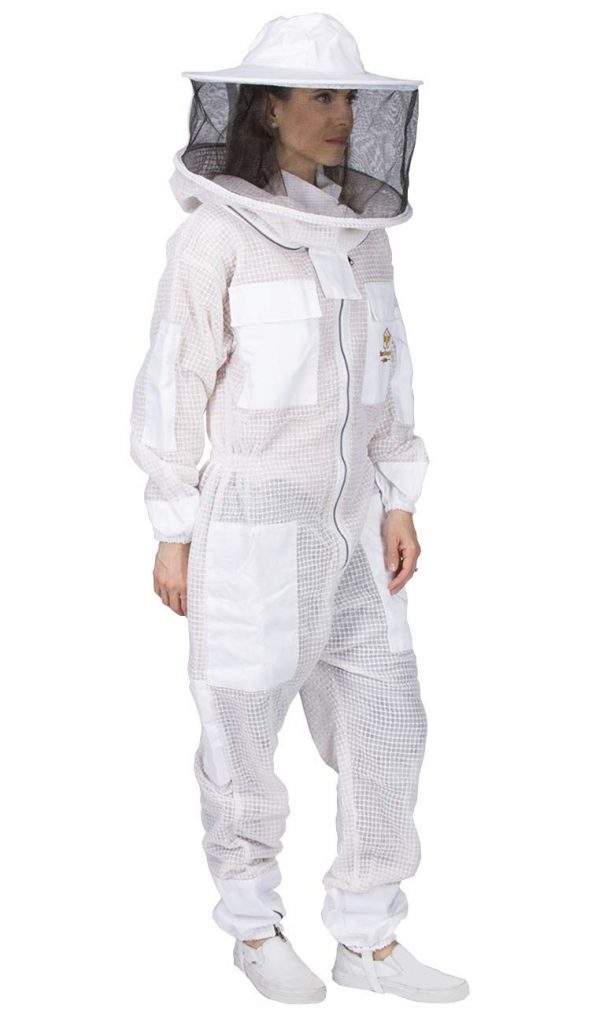
Gloves: Essential for Hand Safety – Choosing the right pair of beekeeping gloves is essential for safeguarding your hands from stings while also providing dexterity. There are two main types of bee gloves to consider: goatskin bee gloves and cowhide bee gloves. Goatskin gloves are known for their exceptional tactile sensitivity, allowing beekeepers to handle delicate tasks with ease. Conversely, cowhide gloves provide robust protection against stings due to their thick leather construction.
Beekeeping Boots: Protecting Your Feet – Beekeeping boots are specifically designed to keep bees from accessing your feet, making them an essential addition to your beekeeping supplies. These boots typically feature a sturdy construction and protective padding to prevent bee stings. Comfort and ankle support should also be considered when selecting beekeeping boots.
Veil: Safeguarding Your Face and Neck – A reliable beekeeping veil is essential for protecting your face and neck from bee stings. These veils typically consist of a fine mesh that allows for excellent visibility while ensuring that bees cannot reach your skin. Some veils come attached to beekeeping suits or jackets, while others are detachable, offering flexibility to suit individual preferences.
Many times, you can purchase a combo pack of a bee suit and bee gloves at a discount.
Please note: Your beekeeping suit or beekeeping jacket should come with a veil included.
Beekeeping Tools:
Having the right equipment is crucial for the success of your beekeeping venture. From the smoker to hive tools and queen marking tools, we will cover all the necessary equipment needed to thrive in the world of beekeeping.
Hive Smoker: A Beekeeper’s Best Friend – One of the most vital tools in a beekeeper’s toolkit is the smoker. This essential tool is used to calm honeybees during hive inspections, making it easier and safer for the beekeeper to work with the bees. The smoker produces cool smoke that masks the alarm pheromones released by guard bees, helping to pacify the colony and reduce the risk of stings. Additionally, the smoke triggers a feeding response in the bees, causing them to fill up on honey and become less inclined to sting. A beekeeper should always carry a smoker and extra fuel to effectively manage their hives.
Hive Tool: Your Versatile Companion – Another indispensable tool for any beekeeper is the hive tool. This versatile tool is used to separate and pry apart hive components during inspections. It helps in loosening frames that are stuck together with propolis, a sticky resin-like substance produced by bees. With a flat blade on one end and a curved hook on the other, the hive tool is perfect for lifting frames, scraping off excess propolis, and removing burr comb. Its sturdy construction ensures that beekeepers can efficiently dismantle and reassemble their hives without causing any harm to the bees or the equipment.
Bee Brush: Gentle Care for Your Bees – While the smoker and hive tool serve functional purposes, the bee brush primarily caters to the care and well-being of the bees. This soft-bristled brush allows beekeepers to gently move bees away from specific areas during inspections without causing harm or stress. It helps keep the bees calm and prevents them from getting unnecessarily crushed or injured. Whether you need to gently remove bees from frames, boxes, or other areas where they may be clustered, a bee brush is an essential tool to maintain harmony between beekeepers and their precious honeybees.
Queen Marking Tools: Tracking and Identification – Queen marking tools are crucial for identifying and tracking the queen bee within a colony. These tools typically consist of a small, colored plastic or metal marker that can be carefully applied to the queen’s thorax. This marking helps the beekeeper to easily locate and follow the queen during hive inspections, reducing the risk of accidentally harming or misplacing her. The color code system established by beekeeping associations provides vital information about the age and year of the queen, allowing beekeepers to monitor their colonies’ health and longevity effectively.
Hive Feeders:
One crucial aspect of beekeeping is the provision of a consistent and reliable source of food for the bees. While bees primarily collect nectar and pollen from flowers, beekeepers often need to supplement their diet, especially during times of scarcity or when establishing new colonies.
Hive feeders are indispensable beekeeping supplies that enable beekeepers to provide the necessary nourishment to their bees. These feeders are designed to hold various types of supplemental food, such as sugar syrup or pollen substitute, which are readily consumed by the bees. By providing an accessible and controlled source of nutrition, hive feeders ensure that bee colonies have the energy they need to thrive, produce honey, and increase their population.
Types of Hive Feeders
Several types of hive feeders are commonly used by beekeepers, each with its own unique characteristics and advantages.
- Entrance Feeders: One of the most commonly used hive feeders, entrance feeders are typically placed near the entrance of the hive, allowing bees easy access to the supplementary food. This type of feeder consists of a small container or tray that holds the food, with small holes or slots that restrict the bees’ access to prevent drowning. Entrance feeders are simple to use and monitor, making them a popular choice for beekeepers of all levels of experience.
- Boardman Feeders: Boardman feeders, favored by beginner beekeepers, are designed to be placed at the hive entrance. These feeders consist of a small plastic or glass jar with tiny holes or slits on the lid, allowing bees to access the food easily. Boardman feeders are often used with commercially available sugar water mixes and can hold a relatively larger volume of food compared to entrance feeders.
- Top Feeders: Top feeders, unlike entrance and Boardman feeders, are placed directly on top of the hive, typically just beneath the hive’s outer cover. They are larger in capacity and can hold significant amounts of food, making them suitable for feeding larger colonies or during times when a significant supplemental food source is required. Top feeders often come with floats or caps to allow bees to access the food without the risk of drowning, enabling beekeepers to provide ample food without repeatedly disturbing the hive.
- Division Board Feeders: Unique feeders that are placed within the hive itself, dividing the brood chamber, division board feeders are designed to be inserted between frames, allowing bees to access the food from inside the hive. Division board feeders are particularly useful when the exterior conditions are unfavorable, such as during cold or rainy weather. By providing food directly inside the hive, this feeder type minimizes the bees’ exposure to external elements and ensures their nutritional needs are met.
Extraction Equipment
Beekeepers require essential equipment to effectively harvest honey from beehives. The extraction process is crucial for obtaining high-quality honey, and the right tools and apparatus play a significant role in ensuring efficiency and productivity.
- Honey Extractors: Honey extractors are vital devices designed to extract honey from honeycomb frames without causing damage. These devices operate through centrifugal force, spinning the frames to separate the honey from the comb. Beekeepers have access to various types of honey extractors, including manual and electric models, each with its own advantages in terms of convenience and performance.
- Uncapping Tools: Before placing the frames in the honey extractor, beekeepers need to uncap the cells to release the honey. Uncapping tools are specifically designed for this purpose, available in forms such as uncapping knives, electric uncapping knives, and uncapping forks. Beekeepers can choose the tool that best fits their preferred uncapping method and hive setup.
- Honey Filters: Once the honey is extracted from the frames, it is crucial to filter it to remove impurities and debris, ensuring a high-quality end product. Honey filters, also known as honey strainers or sieves, consist of fine mesh screens that trap unwanted particles while allowing the honey to pass through. Using honey filters helps beekeepers maintain the purity and clarity of their honey.
- Honey Buckets: Proper storage of extracted and filtered honey is essential. Food grade buckets made from food-safe materials and equipped with airtight lids are ideal for storing honey. These buckets meet strict food safety standards, allowing beekeepers to keep their harvested honey fresh and free from contaminants until it is ready for packaging or consumption.
State Association
The state association is the Virginia State Beekeepers Association.
Buying Bees in Virginia
Where to buy bees and nucleus hives (nucs) in Virginia?
One of the best places to purchase queen bees, packaged bees and nucs is your local bee club.
Engaging with a beekeeping club can greatly enhance your knowledge, skills, and overall experience as a beekeeper.
Here is a list of local bee clubs in Virginia:
- Apple Grove Beekeepers Association
- Ashland Beekeepers Association
- Beekeepers at VT
- Beekeepers Guild of the Eastern Shore
- Beekeepers Guild of Southeast Virginia
- Beekeepers of the Northern Shenandoah
- Blue Ridge Beekeepers Association
- Botetourt Beekeepers Association
- Buckingham Bee Club
- Central Virginia Beekeepers Association
- Clinch River Beekeepers
- Colonial Beekeepers Association
- East Richmond Beekeepers Association
- Fairfax Beekeepers
- Freestate Beekeepers of Lunenburg
- Gateway Beekeepers Association
- Halifax County Beekeepers Association
- Hampton Roads Beekeepers
- Heart of Virginia Beekeepers
- Highlands Beekeepers Association
- Huguenot Beekeepers Association
- Loudoun Beekeepers Association
- Mecklenburg County Beekeepers Association
- Moonshine Beekeepers Association
- Mountain Empire Beekeepers Association
- Nansemond Beekeepers
- Nelson County Bee Club
- New River Valley Beekeepers Association
- Norfolk Beekeepers
- Northern Neck Beekeepers Club
- Northern Piedmont Beekeepers Association
- Northern Virginia Beekeepers Association
- Page Valley Beekeepers
- Piedmont Beekeepers Association
- Pittsylvania County Beekeepers Association
- Prince William Regional Beekeepers Association
- Rappahannock Beekeepers Association
- Richmond Beekeepers Association
- Rockwood Park Backyard Beekeepers Association
- Shenandoah County Beekeepers
- Shenandoah Valley Beekeepers Association
- Southside Beekeepers Association
- Southwest Piedmont Beekeepers
- Tidewater Beekeepers Association
- Virginia Beach Bee Club (VBBC)
- Williamsburg Area Beekeepers
Virginia Beekeeping Laws
The Department of Agriculture and Consumer Services (VDACS) regulates the apiary industry in this state.
It is crucial to familiarize yourself with the pertinent beekeeping laws and regulations.
Registration and Permitting:
- Beekeepers in Virginia are required to register their hives with the state’s Department of Agriculture and Consumer Services (VDACS).
- Upon registration, an official apiary number is assigned to identify your apiary and its location.
- Every beekeeper must ensure that their hives display this apiary number prominently.
Distance Restrictions:
- To maintain harmonious relations with neighboring properties, the Virginia beekeeping laws stipulate specific distance restrictions.
- Hives should be placed at least 10 feet from property lines, ensuring that bees’ flight paths do not interfere with adjoining properties.
- Additionally, hives must be situated more than 100 feet from public highways to prevent potential hazards and disturbances.
Notification of Beekeeping Activities:
- Virginia beekeepers are required to notify adjacent landowners within a 200-foot radius of their proposed apiary location.
- This notification emphasizes good communication and community involvement, ensuring that others are aware of your beekeeping activities.
Disease Prevention and Control:
- Virginia beekeeping laws aim to protect bees from diseases and pests that can significantly impact their health.
- Apiarists must comply with VDACS regulations regarding the prevention, control, and management of contagious bee diseases such as American Foulbrood.
- If a hive is found to be contaminated with a notifiable disease, the owner must immediately notify VDACS for appropriate action.
Apiary Inspection:
- The Virginia Department of Agriculture and Consumer Services may inspect apiaries for disease control, quarantine, or research purposes.
- Beekeepers must cooperate with inspectors and allow them access to apiaries as requested.
Nuisance Complaints:
- In the event of nuisance complaints regarding beekeeping activities, the Virginia beekeeping laws emphasize the resolution of disputes through communication and compromise.
- Mediation and arbitration services are available to help address conflicts amicably, preserving relationships within the community.
Conclusion
Having the necessary beekeeping supplies is crucial for the success and well-being of your bee colony in Virginia. From protective gear to hive components and essential tools, each item plays a significant role in maintaining a healthy and productive hive.
Always ensure that you select high-quality supplies and equipment that meet your specific beekeeping needs. With the right supplies and proper care, you can enjoy the joys of beekeeping and contribute to the wellbeing of these fascinating pollinators in Virginia.
FAQ’s:
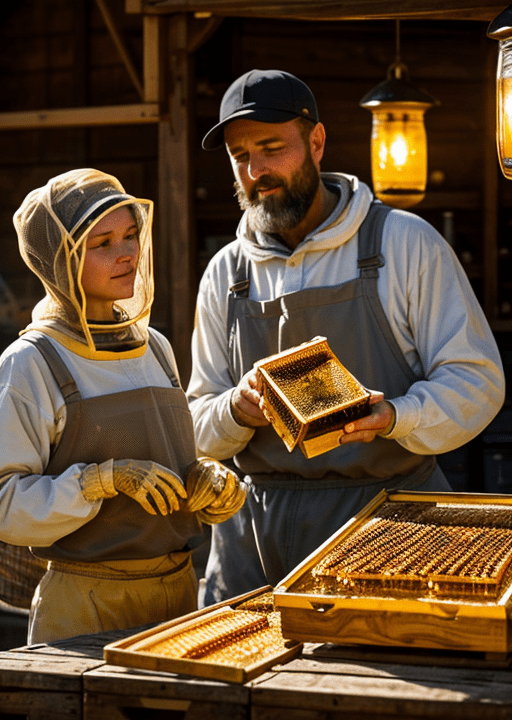
What are bee supplies and why are they important for beekeepers in Virginia?
- Bee supplies refer to various tools, equipment, and materials necessary for maintaining bee colonies and practicing beekeeping. They include items such as beehives, frames, protective clothing, hive tools, feeders, and more. These supplies are essential for beekeepers in Virginia to effectively manage their hives, ensure the health of their bees, and optimize honey production.
What are the main types of beekeeping supplies needed in Virginia?
- Beekeeping supplies in Virginia include essential equipment such as beehives, protective gear, tools, feeding supplies, and maintenance products. Specialty products such as queen rearing supplies, honey extraction equipment, pollination aids, medications, and educational materials are also available.
Where can I find reliable bee supplies in Virginia?
- There are numerous places to find bee supplies in Virginia. You can check out local beekeeping supply stores, agricultural supply centers, or even online platforms dedicated to beekeeping equipment. It’s important to choose reliable sources that offer high-quality products to ensure the success of your beekeeping venture.
How should I choose beekeeping protective clothing?
- When selecting beekeeping protective clothing, prioritize safety and comfort. Look for a full-body suit or jacket made of durable, lightweight fabric that provides ample protection against bee stings. Ensure that the clothing has a veil or hood that securely covers your face and neck, as those are particularly sensitive areas. Additionally, gloves, beekeeping boots, and a hat can further enhance your protection.
What is the best time of year to start beekeeping in Virginia?
- In Virginia, the ideal time to start beekeeping is usually in the spring or early summer when the weather becomes warmer and nectar-producing plants are in bloom. This period allows honeybees to establish their colonies and collect sufficient food resources for the upcoming winter.
Are there specific regulations or permits required for beekeeping in Virginia?
- Yes, in Virginia, beekeepers are required to register their apiaries with the Virginia Department of Agriculture and Consumer Services (VDACS). This registration helps in monitoring and preventing the spread of diseases among honeybee colonies. Additionally, it is crucial to check local regulations and any permits required by your city or county.
How can I appropriately handle bees to minimize risks?
- When working with bees, it’s important to wear protective clothing such as a beekeeping veil, suit, and gloves to minimize the risk of stings. Always approach the beehive calmly and avoid sudden movements or loud noises that may disturb the bees. By maintaining a gentle and careful approach, you can reduce the likelihood of aggressive behavior from the bees.
What should I look for in a beekeeping supplier?
- When you are looking for the best beekeeping supplies in Virginia, it is important to keep a few things in mind. First of all, you want to make sure that the beekeeping supplies you purchase are of the highest quality. It is also important to make sure that you are buying supplies from a reputable beekeeping supplier.
